
The Australian Bureau of Statistics (ABS) today released the national accounts for the March quarter, which registered a 0.6% increase in real GDP over the quarter and a 2.5% rise over the year. The result was below market expectations of a 0.8% rise.
On a per capita basis, however, real GDP increased by only 0.2%. However, real national disposable income per capital rose by 1.3% over the quarter, reversing two consecutive quarters of decline, due to rebounding commodity (iron ore) prices and the terms-of-trade (since reversed).
The below ABS table shows the breakdown by the main components compared to the previous quarter:
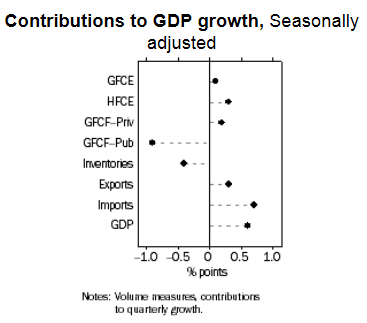
According to the ABS, growth for the quarter was driven by a 1.0% contribution from net exports and a 0.4% increase in final consumption expenditure. These increases were partially offset by decreases in Total gross fixed capital formation (detracting 0.7%) and Changes in inventories (detracting 0.4%).
The industries that drove growth in the March quarter were Mining (0.8%), Financial and insurance services (0.6%) and Health care and social assistance (0.4%). By contrast, Agriculture, forestry and fishing detracted 0.2%.
Results were mixed at the state level, with final demand growing in NSW (+0.4%), Vic (+0.8%), and QLD (+0.6%), but falling in WA (-3.9%), SA (-0.3%), Tas (-1.0%), and the NT (-10.2%), and flat in the ACT. Western Australia, South Australia and Tasmania appear to be in recession, with each experiencing two or more consecutive quarters of negative growth in final demand (albeit different to GDP).
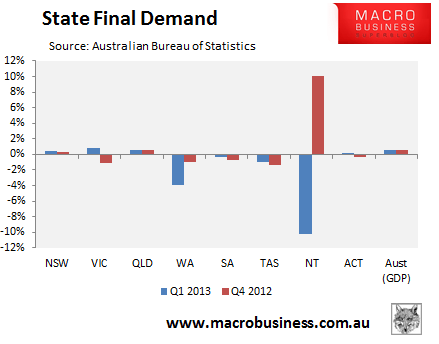
The terms-of-trade rose for the first time in six quarters, up by 2.6% on higher commodity (iron ore) prices:
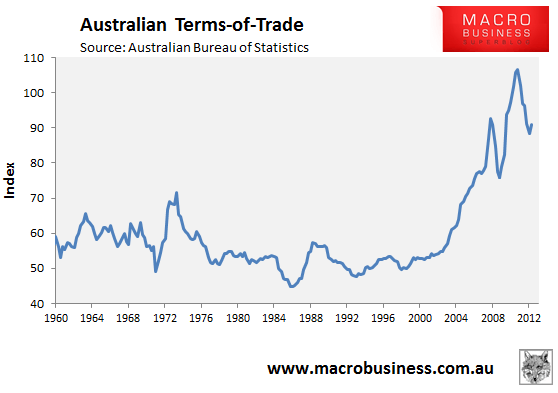
The rise in the terms-of-trade meant that income growth also recovered, with real per capital national disposable income (NDI) rising by 0.9% over the quarter but was down by -0.6% over the year. Going forward, income growth will continue to be weak as long as the terms-of-trade continues to unwind (see below charts).
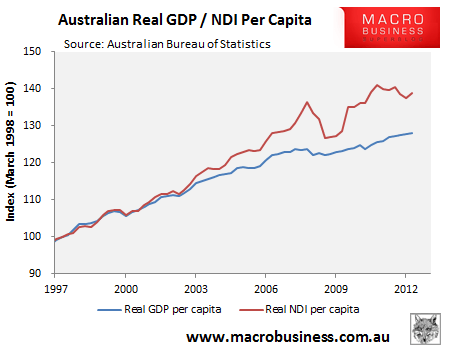
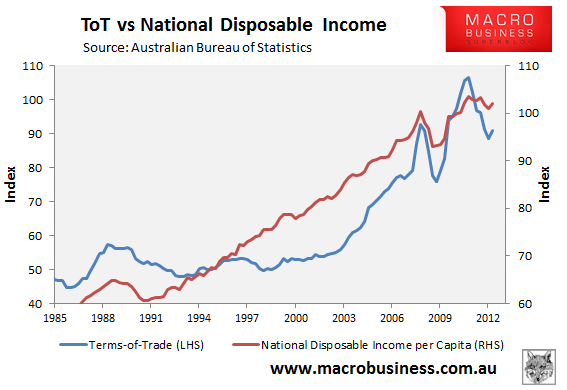
The increase in the terms-of-trade also caused nominal GDP to rise above real GDP, which is a positive for government finances:
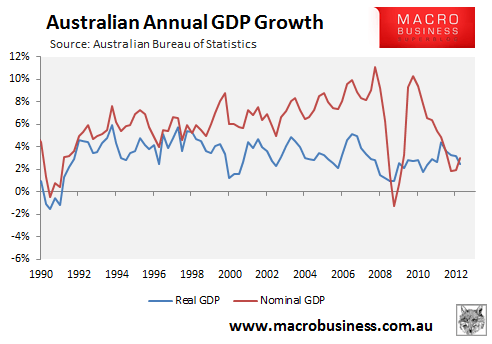
One of the best story to come out of recent releases is that productivity has improved. Although real GDP per hour was flat this quarter, it has risen by 1.6% over the year. The structural adjustment under way looks like it is creating greater efficiencies in the weaker sectors:
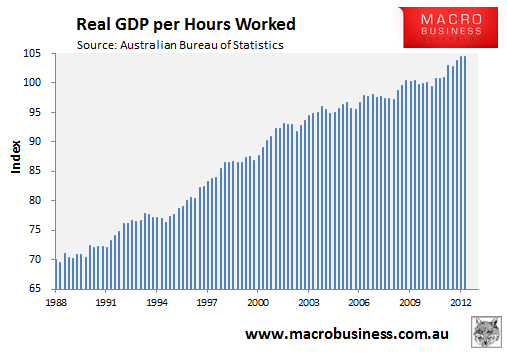
Finally, the household savings ratio rose marginally over the quarter to 10.6% from 10.4%, and remains well above the levels of the 2000s housing/credit boom, but below the recent peak level of 12.1% reached in June 2009 in the wake of the financial crisis:
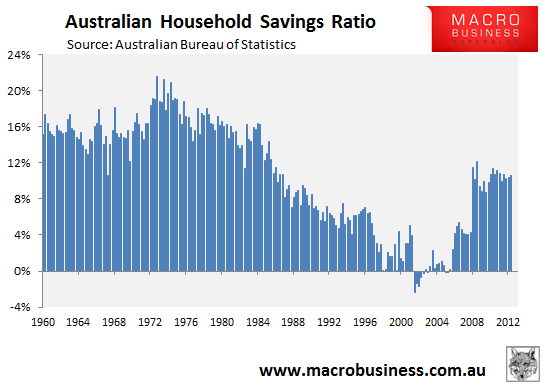
Overall, this is a mixed result. While headline GDP missed expectations, and real GDP per capita growth is fairly weak, disposable incomes and nominal GDP rose on higher commodity prices and the terms-of-trade, and productivity continues to improve.
With iron ore and coal prices falling sharply over the past few months, we can expect the terms-of-trade to resume its falls, dragging on disposable incomes growth.

